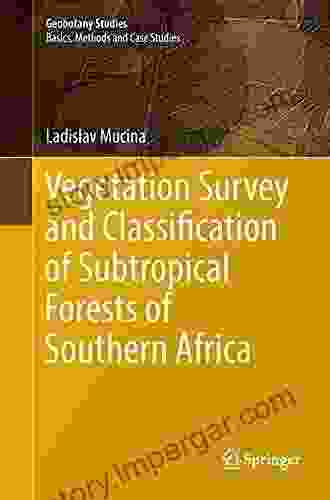Describing Species: A Practical Taxonomic Procedure for Biologists

The process of describing species is a fundamental part of taxonomy, the science of classifying and naming organisms. Species are the basic units of biodiversity, and they play a critical role in the functioning of ecosystems. Describing species is also essential for conservation, as it allows us to identify and protect endangered species.
This book provides a step-by-step process for describing and naming new species. The book is written in a clear and concise style, and it is illustrated with numerous examples. Describing Species is an invaluable resource for taxonomists, biologists, and conservationists alike.
4.7 out of 5
| Language | : | English |
| File size | : | 4831 KB |
| Text-to-Speech | : | Enabled |
| Screen Reader | : | Supported |
| Enhanced typesetting | : | Enabled |
| Print length | : | 542 pages |
Step 1: Collecting specimens
The first step in describing a new species is to collect specimens. Specimens can be collected from a variety of sources, including field surveys, museum collections, and online databases. It is important to collect representative specimens from a variety of populations and habitats.
When collecting specimens, it is important to record the following information:
- The date and location of collection
- The name of the collector
- The habitat where the specimen was collected
- Any other relevant information, such as the behavior of the organism or its diet
Step 2: Examining specimens
Once you have collected specimens, you need to examine them carefully to identify their distinguishing characteristics. This can be done using a variety of techniques, including microscopy, dissection, and DNA analysis.
When examining specimens, it is important to look for the following characteristics:
- The size and shape of the organism
- The color and texture of the organism
- The presence of any distinguishing features, such as spots, stripes, or patterns
- The behavior of the organism
- The diet of the organism
Step 3: Writing a species description
Once you have examined your specimens, you can write a species description. A species description is a formal document that describes the distinguishing characteristics of a new species. The species description should include the following information:
- The scientific name of the new species
- A detailed description of the organism's morphology
- A description of the organism's behavior and diet
- A discussion of the organism's distribution and habitat
- A comparison of the new species to other closely related species
Step 4: Publishing the species description
Once you have written a species description, you need to publish it in a scientific journal. This will make the description available to other scientists and allow them to verify your findings.
When publishing a species description, it is important to follow the guidelines of the International Code of Zoological Nomenclature (ICZN). The ICZN provides a set of rules for naming and describing new species.
Describing species is a complex and challenging process, but it is also an essential part of taxonomy and conservation. This book provides a step-by-step process for describing and naming new species. Describing Species is an invaluable resource for taxonomists, biologists, and conservationists alike.
References
- International Code of Zoological Nomenclature (ICZN). (2012). International Code of Zoological Nomenclature. London: The International Trust for Zoological Nomenclature.
- Mayr, E. (1969). Principles of systematic zoology. New York: McGraw-Hill.
- Sokal, R. R., & Rohlf, F. J. (1969). Biometry: the principles and practice of statistics in biological research. New York: W. H. Freeman.
4.7 out of 5
| Language | : | English |
| File size | : | 4831 KB |
| Text-to-Speech | : | Enabled |
| Screen Reader | : | Supported |
| Enhanced typesetting | : | Enabled |
| Print length | : | 542 pages |
Do you want to contribute by writing guest posts on this blog?
Please contact us and send us a resume of previous articles that you have written.
 Book
Book Novel
Novel Page
Page Chapter
Chapter Text
Text Story
Story Genre
Genre Reader
Reader Library
Library Paperback
Paperback E-book
E-book Magazine
Magazine Newspaper
Newspaper Paragraph
Paragraph Sentence
Sentence Bookmark
Bookmark Shelf
Shelf Glossary
Glossary Bibliography
Bibliography Foreword
Foreword Preface
Preface Synopsis
Synopsis Annotation
Annotation Footnote
Footnote Manuscript
Manuscript Scroll
Scroll Codex
Codex Tome
Tome Bestseller
Bestseller Classics
Classics Library card
Library card Narrative
Narrative Biography
Biography Autobiography
Autobiography Memoir
Memoir Reference
Reference Encyclopedia
Encyclopedia Zen Toronto
Zen Toronto Matt Lobley
Matt Lobley Mark Osterloh
Mark Osterloh Maureen Gilmer
Maureen Gilmer Matthew Thompson
Matthew Thompson Mary Ellen Johnson
Mary Ellen Johnson William Cheng
William Cheng Pascal Quignard
Pascal Quignard Matthew Goodman
Matthew Goodman Oskar Munzel
Oskar Munzel Marika Torbacke
Marika Torbacke Russell Jackson
Russell Jackson Wendy Palmer
Wendy Palmer Phil Keith
Phil Keith Matthieu Ricard
Matthieu Ricard Ray Makar
Ray Makar Miles Adkins
Miles Adkins Whitney Casares
Whitney Casares Thomas K Holcomb
Thomas K Holcomb Mark Freeman
Mark Freeman
Light bulbAdvertise smarter! Our strategic ad space ensures maximum exposure. Reserve your spot today!

 Fyodor DostoevskyUnveiling the Secrets of Redstone Junior High: The Curse of the Sand Witches
Fyodor DostoevskyUnveiling the Secrets of Redstone Junior High: The Curse of the Sand Witches Thomas HardyFollow ·6.6k
Thomas HardyFollow ·6.6k Shawn ReedFollow ·14.7k
Shawn ReedFollow ·14.7k Cruz SimmonsFollow ·11.2k
Cruz SimmonsFollow ·11.2k Steve CarterFollow ·16k
Steve CarterFollow ·16k Dallas TurnerFollow ·14.2k
Dallas TurnerFollow ·14.2k Yasushi InoueFollow ·2k
Yasushi InoueFollow ·2k Brandon CoxFollow ·14.2k
Brandon CoxFollow ·14.2k Evan HayesFollow ·9.1k
Evan HayesFollow ·9.1k

 Roberto Bolaño
Roberto BolañoUnveiling the Beauty and History of the Medici Iris: A...
In the realm of...

 Theodore Mitchell
Theodore MitchellImproving Gut Health in Poultry: Unlocking the Path to...
In the ever-evolving field of...

 Victor Hugo
Victor HugoPersonalized Medicine with a Nanochemistry Twist:...
The future of healthcare...

 George Martin
George MartinA Year Of Wine: Perfect Pairings Great Buys And What To...
## Year of Wine: An Epic Journey Through the...

 Tom Hayes
Tom HayesDelve into the Enigmatic World of Southern Africa's...
Embark on a captivating journey through the...
4.7 out of 5
| Language | : | English |
| File size | : | 4831 KB |
| Text-to-Speech | : | Enabled |
| Screen Reader | : | Supported |
| Enhanced typesetting | : | Enabled |
| Print length | : | 542 pages |












